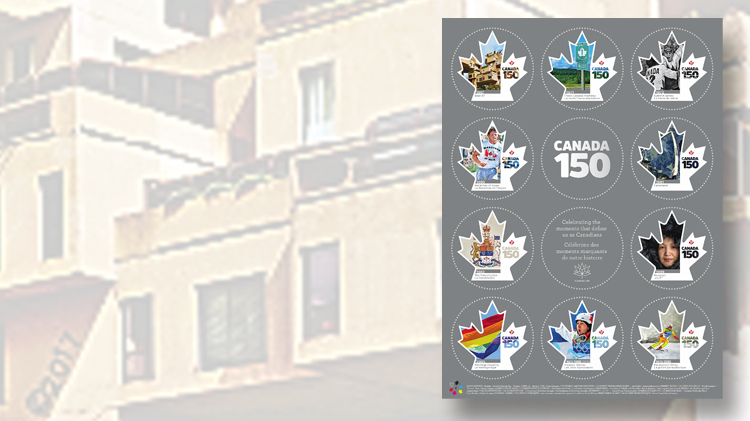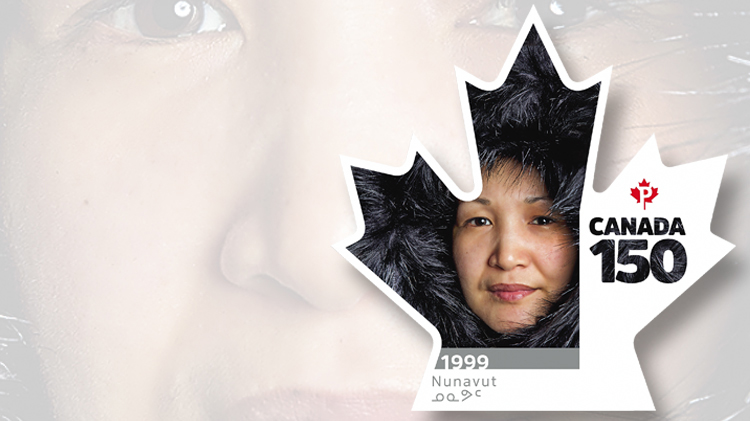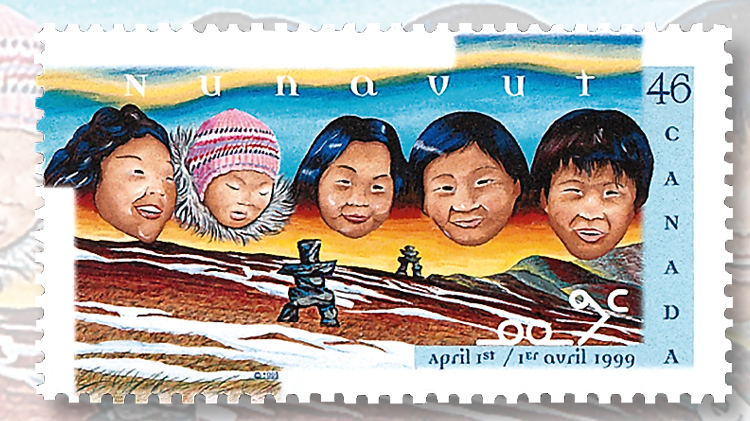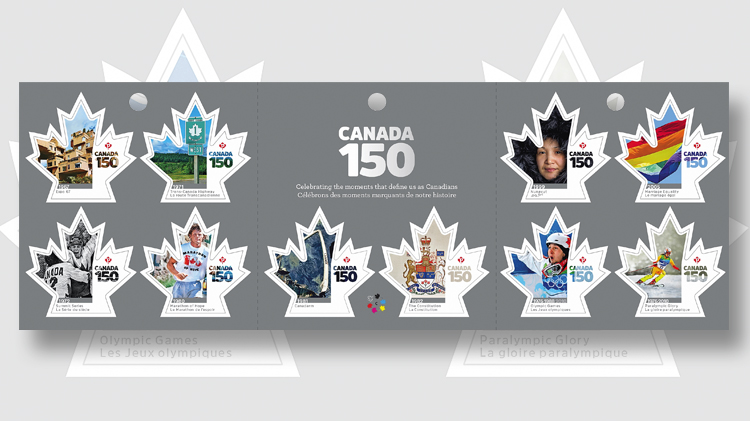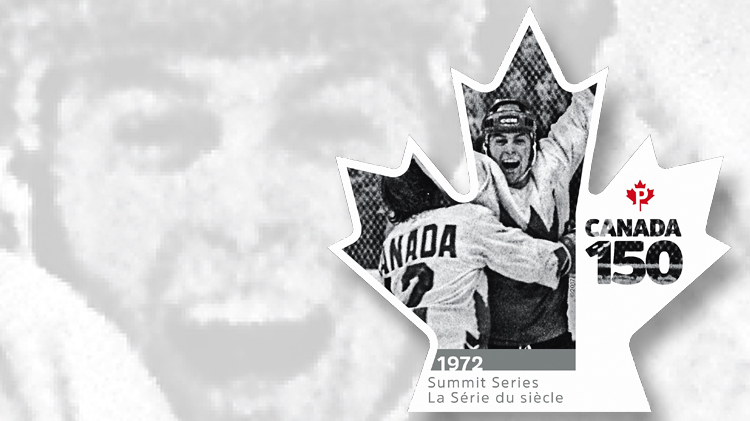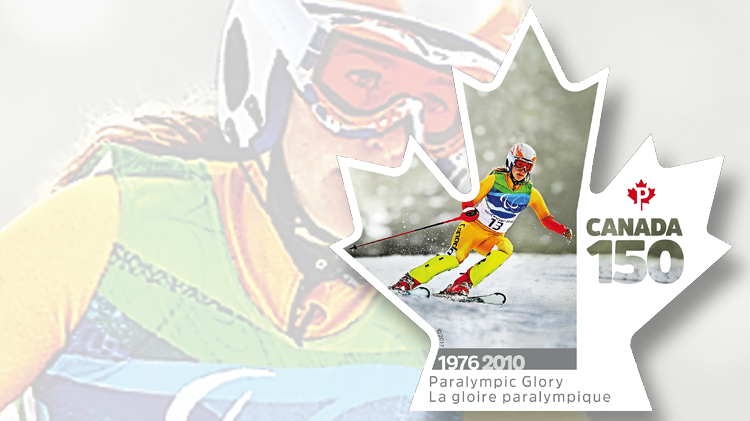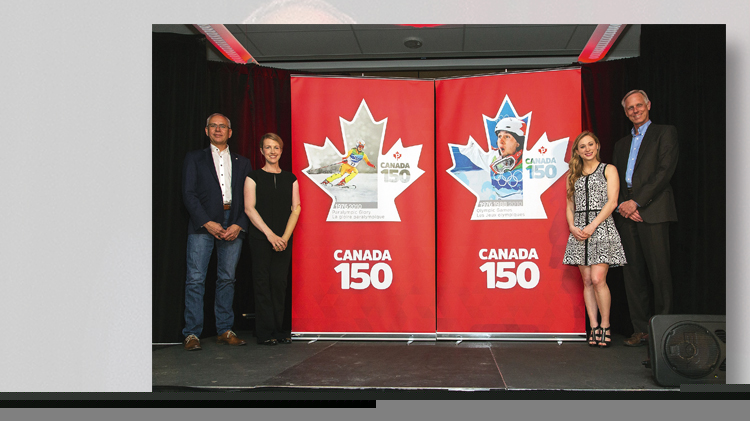World Stamps
Canada 150: 10 stamps celebrate people, places, events of the past 50 years
By Fred Baumann
On June 1, Canada Post completed its marathon unveiling of stamps that began on April 28, revealing the final two stamps in its 10-stamp Canada 150 issue.
These two maple-leaf-shaped stamps honor the national commitment to amateur athletics and Canada’s success in hosting the Olympic Games and Paralympic Games. Both stamps were unveiled at a ceremony held at Canada Post’s Pacific Processing Centre in Richmond, British Columbia.
Another sports-related unveiling was held May 31 in Winnipeg, Manitoba, paying tribute to the legendary 1972 Team Canada hockey squad that took on the mighty national team of the Soviet Union during the height of the Cold War, in what was known as the Summit Series.
Connect with Linn’s Stamp News:
Sign up for our newsletter
Like us on Facebook
Follow us on Twitter
Also, the previous day, May 30, Canada Post unveiled the Canada 150 Nunavut stamp at the legislature in Iqaluit, the capital of Canada’s newest, largest territory.
The stamps in the Canada 150 issue honor important persons, places, and events that have occurred since Canada’s centennial year of 1967.
The previous unveilings were reported in the following issues of Linn’s: Expo 67 (May 22, page 16), the Constitution and the Canadian Charter of Rights and Freedoms, Canadian Innovation/Canadarm and Marriage Equality (May 29, page 10), Trans-Canada Highway (June 5, page 10); and Marathon of Hope (June 12, page 17).
All of the Canada 150 stamps were issued June 1. Each stamp is nondenominated “P” stamp, paying the first-class domestic rate.
One of the two stamps unveiled June 1 recalls Canada’s success as a three-time host of the Olympics. It is inscribed “1976 1988 2010 / Olympic Games,” alluding to the 1976 Summer Olympics in Montreal, the 1988 Winter Olympics in Calgary, and the 2010 Winter Olympics in Vancouver.
The stamp pictures Alexandre Bilodeau after he won the men’s moguls skiing event in Vancouver, capturing Canada’s first Olympic gold medal on Canadian soil.
The other stamp unveiled June 1 celebrates Canada’s role as host of two Paralympic Games, inscribed “1976 2010 / Paralympic Glory” referring to the Games held in Toronto and Vancouver, respectively.
Lauren Woolstencroft, a former para-alpine skier and the first Canadian winter Paralympian to win five gold medals at a single Games, is featured on the Paralympic stamp.
The Summit Series stamp unveiled May 31 depicts a photograph photo taken by Frank Lennon of Team Canada’s ecstatic Paul Henderson embraced by teammate Yvan Cournoyer moments after his winning goal in the eighth game capped a dramatic come-from-behind victory in the closely fought series.
The photo won a National Newspaper Award and was named Canadian Press photograph of the year.
In its Details magazine for collectors, Canada Post summed up the Summit series, “It was a Cold War battle on ice, an emotional roller coaster ride for the country — and like no other hockey series before or since.”
The stamp celebrating the establishment of Nunavut as a territory of Canada on April 1, 1999, shows Ejangiaq Kines of Arctic Bay, Nunavut, an Inuit hamlet on the Borden Peninsula of northern Baffin Island in the Qikiqtaaluk region of Nunavut, about 500 miles north of the Arctic Circle. Her husband Clare Kines took the photograph.
Nunavut means “our land” in the Inuit language of Inuktitut, and is inscribed in that language below “Nunavut” in the stamp design.
Carved out of the central and eastern regions of the Northwest Territories, Nunavut is now the largest province or territory in Canada, at 787,155 square miles.
A quarter century of negotiations by various Inuit groups preceded the 1993 Nunavut Land Claims Agreement with Canada’s federal government and that of the Northwest Territories, which laid the foundation for the creation of the territory of Nunavut on April 1, 1999.
On the day the territory was created, Canada Post issued a 46¢ commemorative (Scott 1784), the first stamp to display the name of the new territory in both the Latin alphabet and in Inuktitut.
Roy White and Liz Wurzinger of Subplot Design Inc. in Vancouver, British Columbia, designed all 10 of the Canada 150 stamps. Each stamp measures 40 millimeters by 40mm each.
They were printed by the Lowe-Martin Group using six-color lithography, as self-adhesives in a booklet of the 10 different designs (Canada Post product number 414048111), and with moisture-activated gum in a pane of 10 (404048107).
In the pane of 10, the maple-leaf framed designs are surrounded by a light gray background and a circle of perforations 1.77 inches (45mm) in diameter.
In addition, separate booklets of eight were issued for the Marriage Equality (414053111) and Nunavut self-adhesive stamps (414052111).
The stamps were printed in the following quantities: 500,000 booklets of 10; 200,000 Marriage Equality booklets of eight; 100,000 Nunavut booklets of eight; and 80,000 panes of 10.
A total of 10,000 packs of 10 official first-day covers, one for each stamp design and each cancelled in Ottawa, also are available, each with an overall design and featuring details of the background and rationale for each stamp on the reverse (414048131).
Canada 150 stamps and FDCs are available at Canada Post’s online shop and by mail order from Canada Post Customer Service, Box 90022, 2701 Riverside Drive, Ottawa, ON K1V 1J8 Canada; or by telephone from the United States or Canada at 800-565-4362, and from other countries at 902-863-6550.
Canada’s stamps and stamp products also are available from many new-issue stamp dealers, and from Canada Post’s agent in the United States: Interpost, Box 420, Hewlett, NY 11557.
MORE RELATED ARTICLES
Headlines
-
US Stamps
Oct 7, 2024, 3 PMMcMurtrie dismissed as APS education director following Sept. 21 arrest
-
US Stamps
Oct 7, 2024, 12 PMVasiliauskas named president of Mystic Stamp Co.
-
US Stamps
Oct 6, 2024, 5 PMApgar souvenir card available
-
US Stamps
Oct 6, 2024, 4 PMFirst Continental Congress and U.N. stamps receive Scott catalog numbers
